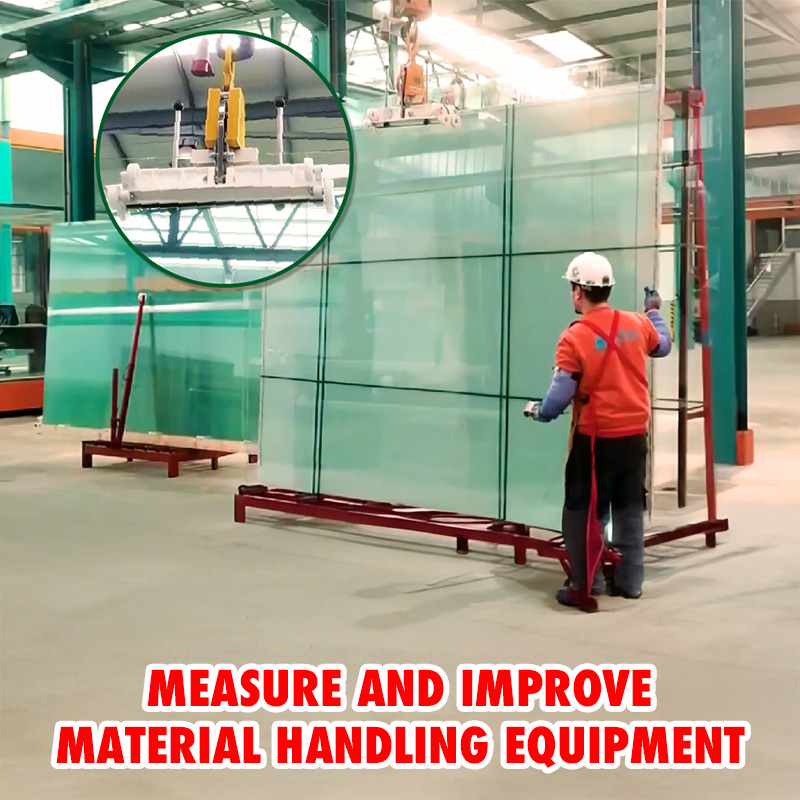



The right material handling equipment not only moves goods safely and swiftly but also drives down costs, minimizes downtime, and enhances workplace safety. In this comprehensive guide, we’ll explore how to measure the performance of your equipment and share proven strategies to improve your operations—leveraging semantic SEO best practices and targeted anchor links to deepen your understanding.
Before you can optimize your processes, you need data. Measuring performance enables you to:
Identify Bottlenecks: Pinpoint stages where throughput slows.
Track Utilization: Understand how often each asset is in use.
Reduce Downtime: Monitor maintenance needs and unplanned breakdowns.
Enhance Safety: Record incident rates tied to specific handling equipment.
By focusing on accurate metrics, you ensure that investment in lifting equipment, whether manual or automated, yields the highest return.
Orders per Hour (OPH): Number of orders processed through conveyors, forklifts, or scissor lifter stations in an hour.
Average Handling Time (AHT): Time taken to move one pallet or carton from source to destination.
Utilization Percentage: Ratio of active run-time versus available hours for forklifts, stacker cranes, or vacuum lifter slab lifter units.
Idle Time: Scheduled downtime versus unscheduled idle time—critical for justifying upgrades.
Mean Time Between Failures (MTBF): Average operating time before a breakdown.
Mean Time to Repair (MTTR): Average time required to restore equipment to service.
Preventive vs. Reactive Maintenance Ratio: Helps you gauge maturity of your maintenance program.
Incident Rate: Number of safety incidents per 10,000 handling moves (e.g., misuse of a lifting clamp or improper stacking).
Damage Rate: Percentage of goods damaged during handling processes.
Integrating sensors on forklifts, AGVs, and cranes provides real-time data on speed, load weight, and location. For example, monitoring a crane’s load cycles helps you optimize gantry operations—discover how gantry cranes work to streamline material flows.
A robust WCS aggregates data from conveyors, sorters, and ratchet tie down traps usage. Central dashboards reveal inefficiencies—enabling you to Revolutionize Your Material Handling through targeted improvements.
Automated scanning at loading docks and picking zones ensures accurate time stamps for each movement. Coupling scanning with electric vacuum lifter methods reduces manual errors and provides precise throughput figures.
Moving from reactive repairs to scheduled upkeep increases uptime dramatically. Implement a CMMS (Computerized Maintenance Management System) to track parts such as pads on pallet jacks or wear components on the Versatility of Aardwolf Slab Lifters.
Upgrade to scissor lifter attachments for ergonomic order picking—see scissors for lifting for compact, powerful solutions.
Train staff on proper usage of the ratchet strap to secure odd-shaped loads safely
Apply value stream mapping to identify non-value-added movements. Consolidate workstations, balance workloads, and reduce forklift travel distances. Introducing a range of jib crane modules can centralize load movements and minimize floor congestion.
AGVs/AMRs: Deploy for repetitive pallet movements to free up forklift operators for higher-value tasks.
Conveyor Integration: Link conveyors with picking stations to reduce manual handling steps.
Advanced Robotics: Collaborative robots can handle delicate tasks alongside humans, boosting throughput in e-commerce operations.
For an overview of automated options, explore our guide on types of material-handling equipment.
Regularly update operating procedures and conduct hands-on workshops. Well-trained operators can extend the life of lifting clamps, avoid spills in vacuum systems, and reduce near-miss events.
High-grade lifting equipment components—bearings, hydraulic pumps, wear pads—prove cost-effective over time. When evaluating purchases, be sure to:
Check for OEM certifications.
Compare TCO (Total Cost of Ownership) over the equipment lifecycle.
Validate compatibility with existing WCS and rack configurations.
Your choice of vendor can make or break your uptime. Seek partners that offer:
Comprehensive After-Sales Support: Rapid spare parts delivery and on-site service.
Consultative Approach: Facility audits and custom solutions for your specific throughput and storage density.
Scalable Solutions: Ability to expand with your business growth.
Leverage resources on how to rely on advanced material-handling equipment and consider integrated offerings through Fully-integrated material handling equipments.
Equipment Investment: Initial purchase plus installation.
Operating Expenses: Energy consumption, parts replacement, and labor costs.
Opportunity Costs: Lost throughput during downtime.
After implementing changes, reassess your KPIs:
Has order throughput increased by X%?
Reduced MTTR by Y hours?
Lowered damage rates by Z%?
Regular reviews—quarterly or semi-annually—keep you on track. Incorporate feedback loops so frontline teams can suggest further enhancements.
As the material handling industry evolves, stay ahead of:
IoT-Enabled Predictive Maintenance: AI-driven alerts before failures.
Autonomous Mobile Robots: Seamlessly integrated with human workflows.
Digital Twins: Virtual replicas of your facility to simulate improvements.
Green Logistics: Energy-efficient drives and regenerative braking on forklifts.
Embracing innovation not only drives efficiency but also positions your operation as an industry leader.
Measuring and improving your material handling equipment is an ongoing journey. By tracking the right KPIs, leveraging modern tools, and partnering with expert material handling companies, you can unlock substantial gains in safety, efficiency, and ROI. Remember to:
Define clear metrics (throughput, uptime, safety rates).
Invest in smart technologies (IoT, WCS, automation).
Maintain and train consistently (preventive maintenance, operator best practices).
Collaborate with trusted vendors (OEM-certified parts, consultative support).
With these steps, you’ll be well-equipped to optimize your handling material processes and achieve peak warehouse performance.
Sign up to receive the latest info on new Aardwolf products, special offers and more.
By signing up you agree to receive emails from Aardwolf with news, special offers, promotions and other information. You can unsubscribe at any time.